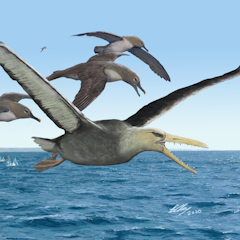
Artículos sobre Continents
Mostrando todos artículos

Cratons are pieces of ancient continents that formed billions of years ago.

Scientists were not previously certain how the precious stones arrived at the Earth’s surface.

Giant meteorite impacts may have created the land we live on

Dating of rocks that once formed some of the world’s first beaches suggests the first large continents grew large enough to rise above sea level roughly 3 billion or so years ago.

Take a closer look at what’s driving climate change and how scientists know CO2 is involved, in a series of charts examining the evidence in different ways.

Evidence from the Pilbara region suggests Earth in its youth behaved very differently to how it does today, and had more water within it than previously thought.

The Atlantic Ocean is still growing physically, but humans are over-harvesting its rich fisheries. The most famous one – North Atlantic cod – has become a textbook example of harmful overfishing.

In what could be described as a rather difficult adolescence, Earth earliest continents remained in flux — disappearing and reappeared over 1.5 billion years before finally gaining form.

Paleontologists have discovered fossil remains belonging to an enormous ‘toothed’ bird that lived for a period of about 60 million years after dinosaurs.

Born on July 30, 1920, geologist and cartographer Tharp changed scientific thinking about what lay at the bottom of the ocean – not a featureless flat, but rugged and varied terrain.

We undertook a 28-day voyage to explore a possible lost continent in a remote part of the Coral Sea, in an area off the coast of Queensland. Here’s what we found.

Giant forces slowly move continents across a viscous layer of the Earth, like biscuits gliding over a warm toffee ocean. This stresses the continents, and twists and contorts the crust.

Scientists have predicted four supercontinent scenarios - but which is the most likely?

The world’s oldest known material is from Western Australia. But for much of Australia’s geological past, the eastern states simply didn’t exist. They’re relative newcomers to our ancient continent.

Researchers have found a small piece of a “lost continent” buried underneath the lava on Mauritius.

Fifty years on from a groundbreaking paper, geophysicists have progressed from believing continents never moved to thinking that every movement may leave a lasting memory on our planet.

From the 1950s until recently, we thought we had a clear idea of how continents form. Most people will have heard of plate tectonics: moving pieces on the surface of the planet that collide, pull away…
